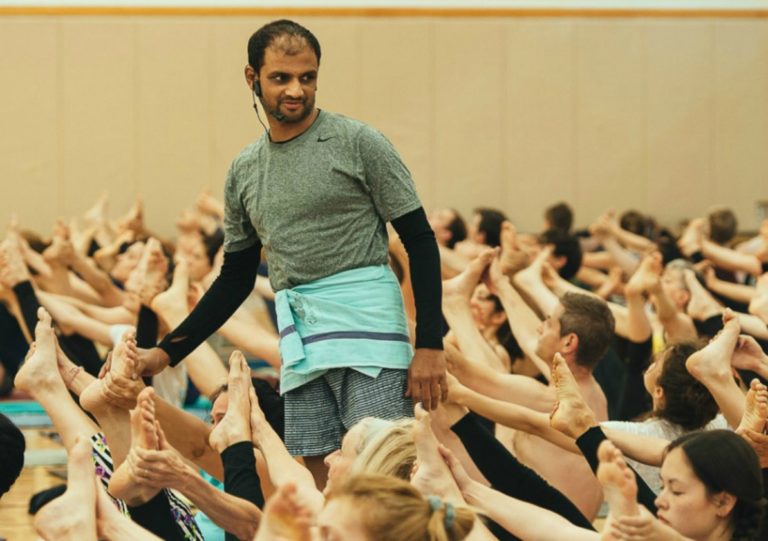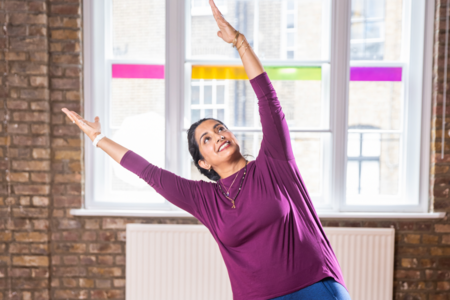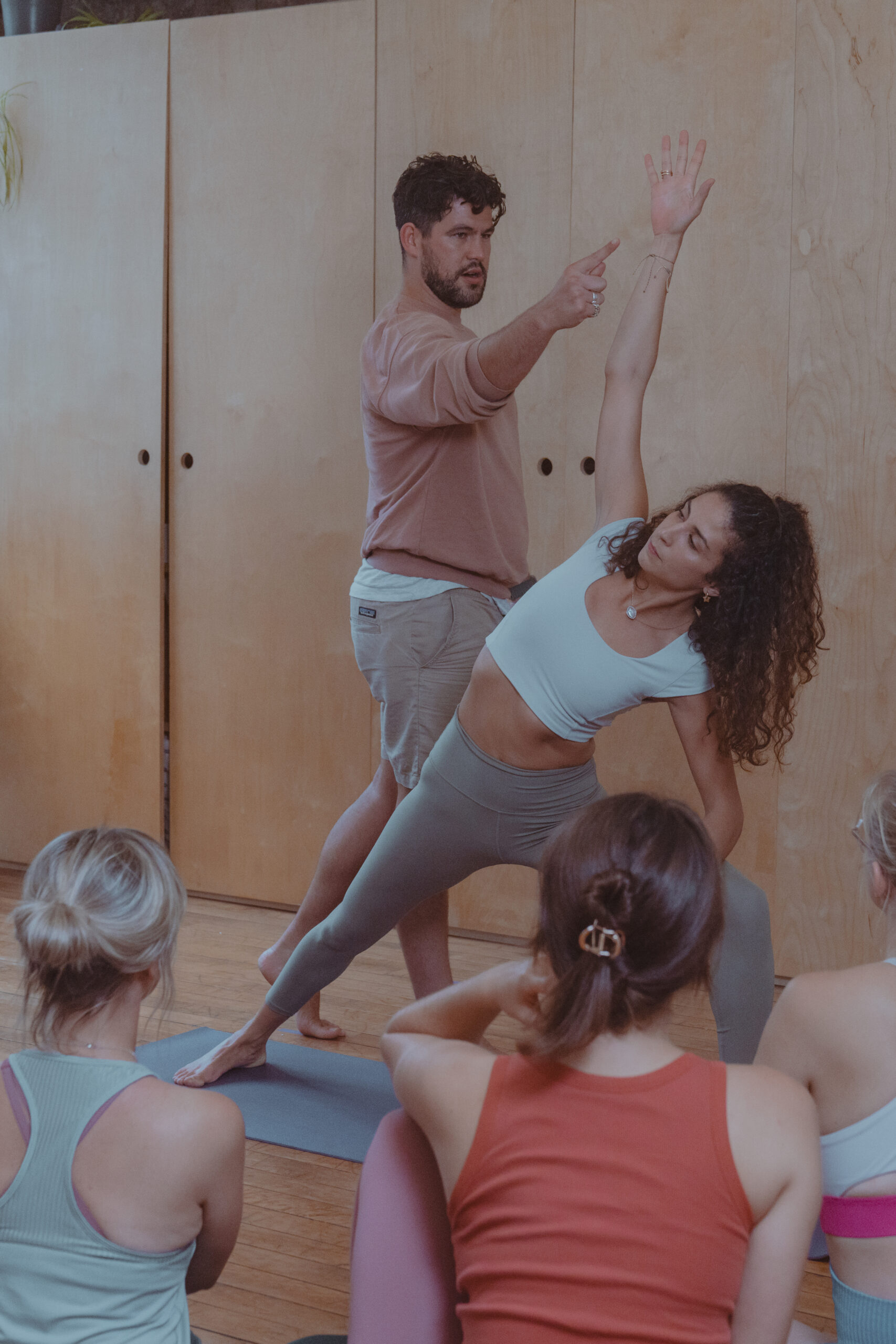It is a cold winter’s morning in London and as usual I am a little late to start the day and get on my mat – a daily ashtanga vinyasa yoga practice that I’ve cultivated for the past 16 years. I’m not alone in this. In fact at 7.30 am when I arrive at the shala, or yoga school, I’ll probably have to wait a little before a space is free. Around the world hundreds of people will be going through a similar routine, some in a warm and inviting yoga studio, others in the solitary confines of their homes, and some lucky ones in Mysore where Sharath Jois, the current holder of the ashtanga lineage resides and teaches.
Despite the fact ashtanga is physically challenging, the popularity of the system has grown exponentially in recent years because it is worth the effort and sweat. If practiced correctly it has profound healing effects: practitioners experience a sense of being more present in the now, feel more kindness and gratitude, and occupy a healthier, stronger and much more flexible body.
But how did it all start?
Most hatha yoga systems that we practise in the west would not be known today if Sri Tirumalai Krishnamacharya hadn’t salvaged the knowledge surrounding this ancient system of liberation. Born in a time when both classical Hinduism and British colonialism were opposed to yoga teachings Krishnamacharya was, arguably, fated to devote himself to the study of this ancient philosophy and practice.
His passion and genius drew towards him such notable students as B.K.S. Iyengar, Indra Devi and Sri.K. Pattabhi Jois, the 20th century teachers who introduced yoga more widely into the West in the forms that we today recognise as Iyengar Yoga, ashtanga, etc.
Krishnamacharya himself was taught by Rama Mohana Brahmachari for more than seven years. Amongst the many yogic texts that they studied together was, purportedly, the legendary Yoga Korunta, which it is said contained the numerous postures and movements that would later form the ashtanga vinyasa yoga posture sequences.
The story goes that the text was written on palm leaves (as was common practice at the time) and eventually badly damaged. Guruji, as Pattabhi Jois was affectionately and respectfully known, said he never saw the text, leading some western scholars to regard the Yoga Korunta as nothing more than a myth. Recent research however suggests that a text written by the yogi Korantaka, exists with content very similar to what we might have expected of the Yoga Korunta.
Despite the absence of a text, Krishnamacharya imparted the teachings of the Yoga Korunta orally, as was common at the time, to Guruji. Together, it is said, they studied the descriptions of the asanas and refined them into sequences , grouping postures, the transitions between them, the drishti (gaze point), vinyasa (the jump backs and jump throughs) and all the components of the practice we now call ashtanga. This formed the basis of the Primary, Intermediate and Advanced sequences taught and practised today and which form the third of the eight limbs of ashtanga Yoga as laid out in the Yoga Sutras of Patanjali, the philosophical text that underpins the physical practice itself.
After remaining under Krishnamacharya’s tutelage for more than 25 years, Guruji established the Ashtanga Yoga Research Institute in Mysore, South India, in 1948 and taught the first European student in 1964. American students followed in the very early 1970s after Guruji became known to Europe and the U.S. Slowly, ashtanga started being much more globally known with more and more students travelling to India to practice with Guruji. By the mid 90’s the shala in Lakshmipuram had become too small for the growing number of yogis so in 2002 a new shala was inaugurated in Gokulam, an affluent suburb of Mysore. In 2007, two years before his death the shala changed hands and Guruji’s daughter Saraswathi and his grandson Sharath continue his formidable work until today.
Studying in Mysore and practising with Sharath at the main shala is a pilgrimage and dream for most ashtanga practitioners. The practice room is charged with powerful energy, practice rarely feels as light, effortless and strong anywhere else in the world. Mysore is steeped in history and there are numerous philosophy and chanting classes that help the yogi immerse themselves in Indian culture, but securing a place to study there is far from easy these days as thousands apply each year for only a few hundred spots.
Sharath is faithfully continuing the work of his grandfather. Recognising the importance of the physicality of the practice he makes it clear that yoga is much bigger than asana (the physical posture work) and emphasises the importance of studying yogic philosophy, connecting with nature, following our dharma (duty) and concentrating on doing good and being kind.
Whether or not you hold skepticism about ashtanga’s history and ancient credentials, it is a system that belongs to no man for it holds wisdom and intelligence beyond one person and beyond words. You can fleetingly experience it when you let the breath take the lead and allow the ego to take rest. If you haven’t yet given it a try, I suggest “you do”.
Nik teaches ashtanga on Thursdays at 6.00pm in Camden and Fridays at 6.00pm in Shoreditch.
Did you know we offer over 25 different styles of yoga on our schedule? To showcase the variety, we’ll be highlighting different styles each month throughout the year – and we’re starting 2018 with ashtanga yoga. Get to know each style with exclusive content right here on our blog and with our special offers: this month you can bring a friend for free to any ashtanga class at triyoga.










